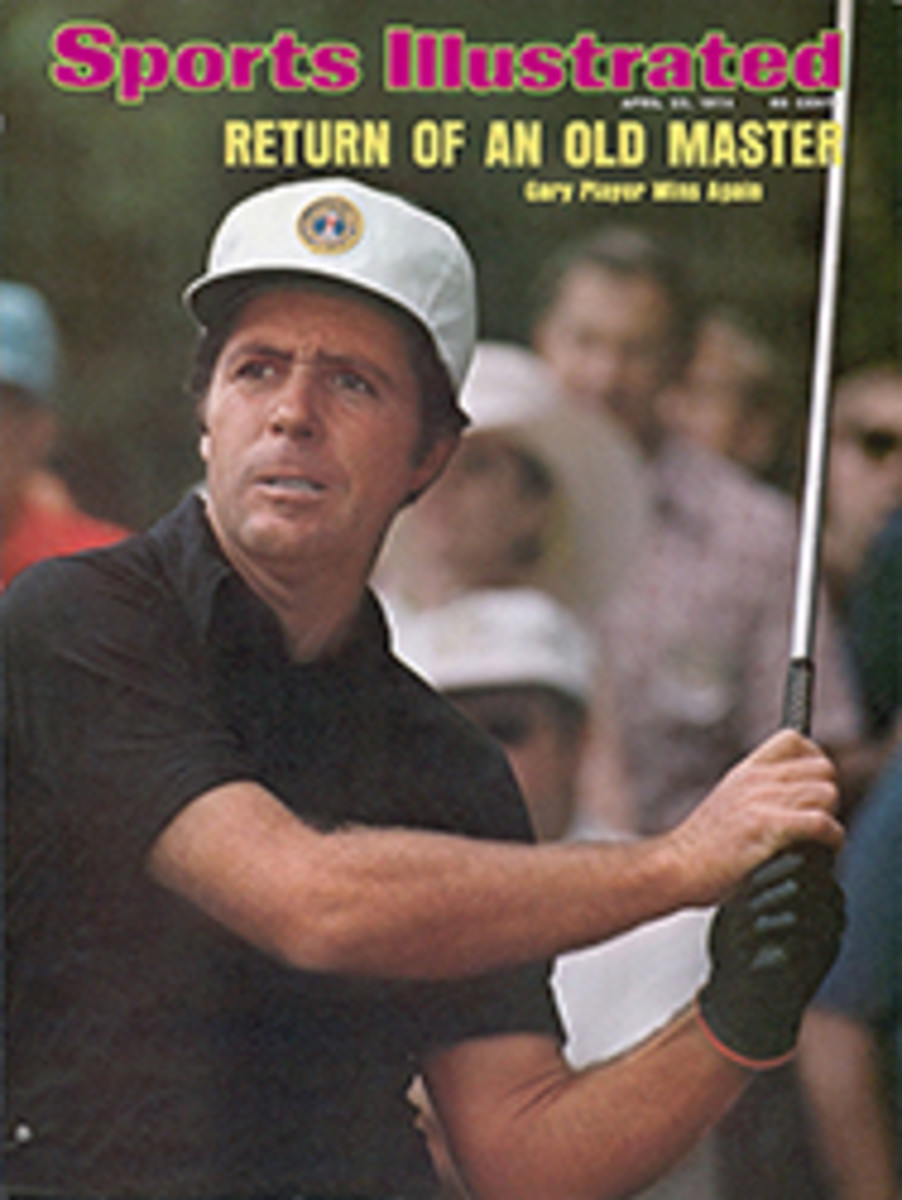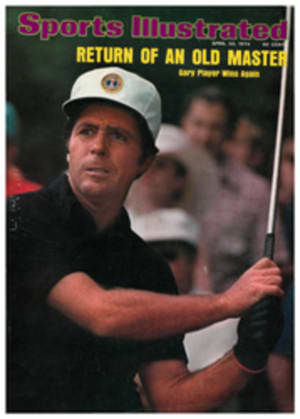
Statesmen are big shots
The idea of Hobart College (enrollment 1,000) beating Syracuse University in anything other than Scrabble would appear to be ludicrous. Why, Hobart's very nickname, the Statesmen, suggests as much. The aims of the college, to quote its catalog, are simply "to civilize...to humanize...to liberate intellectually." Well, last week on tiny Boswell Field, Hobart's lacrosse team civilized, humanized and intellectually liberated the Orangemen of Syracuse by the incredible score of 23-1.
Not that Hobart is a newcomer to the game of lacrosse. The college has been playing the sport since 1898 and prior to this season had won over 58% of its games. In 1972 the Statesmen won the United States Intercollegiate Lacrosse Association tournament, the first national championship held for small colleges. This year they are 3-0, including a 28-3 rout of Clarkson that broke the Hobart scoring record, and are once again a strong contender for the title.
Hobart's eminence in lacrosse is further proof that the Finger Lakes region of central New York state is beginning to rank with Baltimore and Long Island as a hotbed of the sport. In 1971 Cornell, which is, of course, high above Cayuga's waters, won the NCAA lacrosse title. Close by, on Seneca Lake in Geneva, N.Y., Hobart was, as noted, the small-college champion the next year while nearby Cortland State won the same title last year. Now recruiters from the even more traditional Southern powers are beginning to scout the area's high schools for talent.
For 37 seasons the lacrosse coach at Hobart was a legendary gentleman named Francis L. (Babe) Kraus, who won 208 games and is now in the Lacrosse Hall of Fame. He was succeeded in 1967 by Buddy Beardmore, who stayed only one year before moving on to Virginia and then to Maryland, where last year he coached the Terrapins to the NCAA championship. Beardmore in turn was followed by the current coach, Jerry Schmidt, who seems determined to outdo both his predecessors. In seven years Schmidt's teams have won 75% of their games and have yet to lose in their league, the Independent College Athletic Conference.
Schmidt was an All-America attackman at Johns Hopkins University in the early '60s (SI cover, April 23, 1962), and at Hobart he has fostered a style of play that makes Baltimore traditionalists look askance. Lacrosse is generally divided into Northern and Southern styles of play, although the differences are rapidly merging. Southern lacrosse, epitomized by the play at Hopkins, emphasizes polished stickwork, maneuvering for the percentage shot and conservative defense in which the defenseman primarily concerns himself with maintaining position between his opponent and the goal. The Northern brand of the game lacks the finesse of the Southern but makes up for it in aggressiveness and contact, with a lot of body checking similar to that in hockey. Without sacrificing stickwork Hobart has carried aggressiveness and contact to new extremes.
Lacrosse teams are composed of three attackmen, three midfielders, three defensemen and a goalie. Attackmen almost always stay at their opponents' end of the field while the defensemen and the goalie remain at their end. Normally a game consists of three attackmen and three midfielders maneuvering the ball for a score against three midfielders, three defensemen and the goalie. This is known as a settled situation. Hobart's frenetic style of play, on the other hand, might best be compared to that of a fast-breaking basketball team. It is built around creating unsettled situations—anything less than the standard six-on-six—for Statesmen's offense.
To accomplish his aims Schmidt has introduced a pressing, double-teaming defense designed to steal the ball. In a Johns Hopkins-Virginia game two years ago Hopkins Attackman Jack Thomas stood near the corner with the ball for five minutes and the Cavaliers politely let him be. At Hobart, players would have been after him like Doberman pinschers sicced on a burglar. Instead of merely trying to stay between their opponent and the goal, Hobart defensemen constantly harass the opponent, double-teaming to get at the ball whenever possible. If it were as easy to pass a lacrosse ball under pressure from one stick to another as it is to diagram plays on paper, a double team would be an easy situation to beat, and in fact some of the goals scored off Hobart look embarrassingly easy. As Schmidt concedes, "Basketball teams that press get a lot of layups scored against them." But more often than not Hobart ends up with the ball in an unsettled situation. And then what Schmidt calls his "well-legged kids" take off.
Unless they have a man advantage, as in a four-on-three, most teams slow the ball down and wait for their six-man offense to set up. Not so with Hobart, where Schmidt urges his team to rush the net. "We made a rule," he says. "If a guy takes a shot, we never criticize him. We never say 'bad shot.' It's easier to score in a three-on-three than in a six-on-six because there are fewer sticks to knock the ball down, there are fewer backup defenders if you get by your man and you can see an open man more clearly." Schmidt also sees a distinct psychological advantage. "If you're going to catch your breath in sports," he points out, "you should do it on offense. Most players tend to do it on defense because they want to score. Hobart takes advantage of tired midfielders."
Pity the opposing goaltender. Last year the Statesmen took 917 shots to their opponents' 550. In the three games this year they have already outgunned opponents 178-69. Schmidt will admit that they were not all great shots but "what you lose in quality, you make up in volume." This is particularly true in lacrosse because the ball can sometimes take awfully crazy bounces off the chewed up turf in front of the goal. Furthermore there is always the chance to knock in a rebound against a shell-shocked goaltender.
Understandably, attackmen gravitate to Hobart. "An attackman would want to come here just like a split end would want to go to a school that throws the ball a lot," says Schmidt. "He knows he's going to be a good goal scorer here." Schmidt was a big goal scorer at Hopkins. In his senior year he scored 36 times to finish fourth in the nation. Two years ago his three starting attackmen each had 47 goals.
One of those attackmen, Rick Gilbert, then a sophomore, added 75 assists to total 122 points. Lacrosse records are surprisingly vague but Gilbert's is probably the highest point total ever. Last year he added 114 more points while setting a single-season assist record of 88 feeds. Research at Hobart has turned up only one other instance of a 100-point season in all the history of collegiate lacrosse. With the 91 points he scored as a freshman, Gilbert is a cinch to pass the 400 mark for his career. In three games this season he has already rammed home 13 goals and had 17 assists to push his career total to 357 points.
At 5'8", 160 pounds, with long, stringy hair and glasses, Gilbert hardly resembles the stereotype All-America. A political-science major who hopes to teach elementary school in Baltimore, he seems even less concerned than his coach about the professional contract he will never sign. "Athletics shouldn't be utilized to make money," Gilbert says. "They don't have that much value in society."
Schmidt's "well-legged kids" almost failed to get off to a good start this spring. In the first quarter of the opening game against Adelphi, the Statesmen played poorly and fell behind 5-2. Then Gilbert literally took matters into his own hands. In a stretch of just 84 seconds early in the second quarter he scored three unassisted goals to tie the game. At that point Schmidt rested his star, substituting a freshman, John Hayes. Hayes promptly raced down the field and on his very first shot as a collegian rifled home a goal to put his team ahead. For Hobart opponents there is no rest. These Statesmen never heard of a ceasefire.
PHOTO
GILBERT IS THE SPORT'S TOP SCORER

